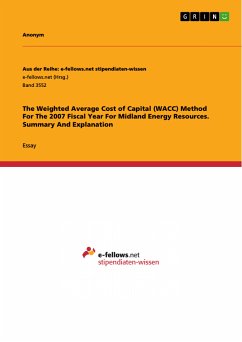Master's Thesis from the year 2014 in the subject Business economics - Investment and Finance, grade: 1,5, Frankfurt School of Finance & Management, course: Corporate Finance, language: English, abstract: Total financing volumes and financing structures are important indicators for numerous real economic and financial developments. Financing decisions are based primarily on investment decisions, but also provide indications for financing conditions for companies in the money and capital markets. The financial crisis starting in 2007 and 2008 affected these markets in Germany in various ways. The spillover of the crisis to Germany can, to a considerable degree, be explained by the fact that German credit institutions had reached the brink of collapse. One central problem and cause of the crisis was poor risk monitoring, for instance through rating agencies on the US securitization market. The burden on banks due to crisis-induced write-downs as well as the drying-up of interbank money markets, which resulted in refinancing problems for numerous credit institutions, created a fear of a potential ‘credit crunch’ for companies or the economy at large. This means the main macroeconomic concern was that the restriction on credit supply might be severe enough to cause an economic crisis. As a result of these disturbances, the regulating authorities put forth several new measures, provisions and rules. As a lesson learned, one central task should be strengthening the resilience of the financial system to future crises. The work in hand, focuses on the effects of the Basel III regulations as these, on the one hand, are already being enforced and, on the other hand, have a considerable impact on corporate finance and corporate banking business models. The Basel III Accords concerning higher capital requirements for banks were already underway before the financial crisis hit, but the legislators and supervisory authorities accelerated their implementation after the onset of the crisis. In its aftermath, the economy experienced historically low levels of interest rates as a result of monetary policy. Nevertheless, the conventional wisdom of scientists, consultants, and other experts was shaped by the experience that bank loans tend to become more expensive and scarcer when when new regulatory requirements are introduced. They advised companies to shift their debt capital structures from major bank loan financing, which has historically been the major source in Germany, to more capital market financing instruments.








